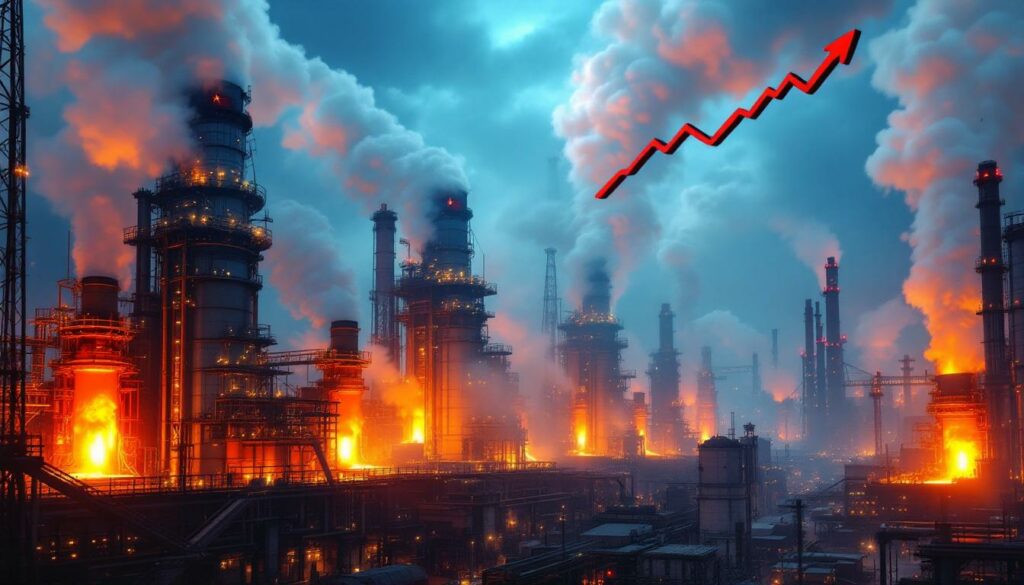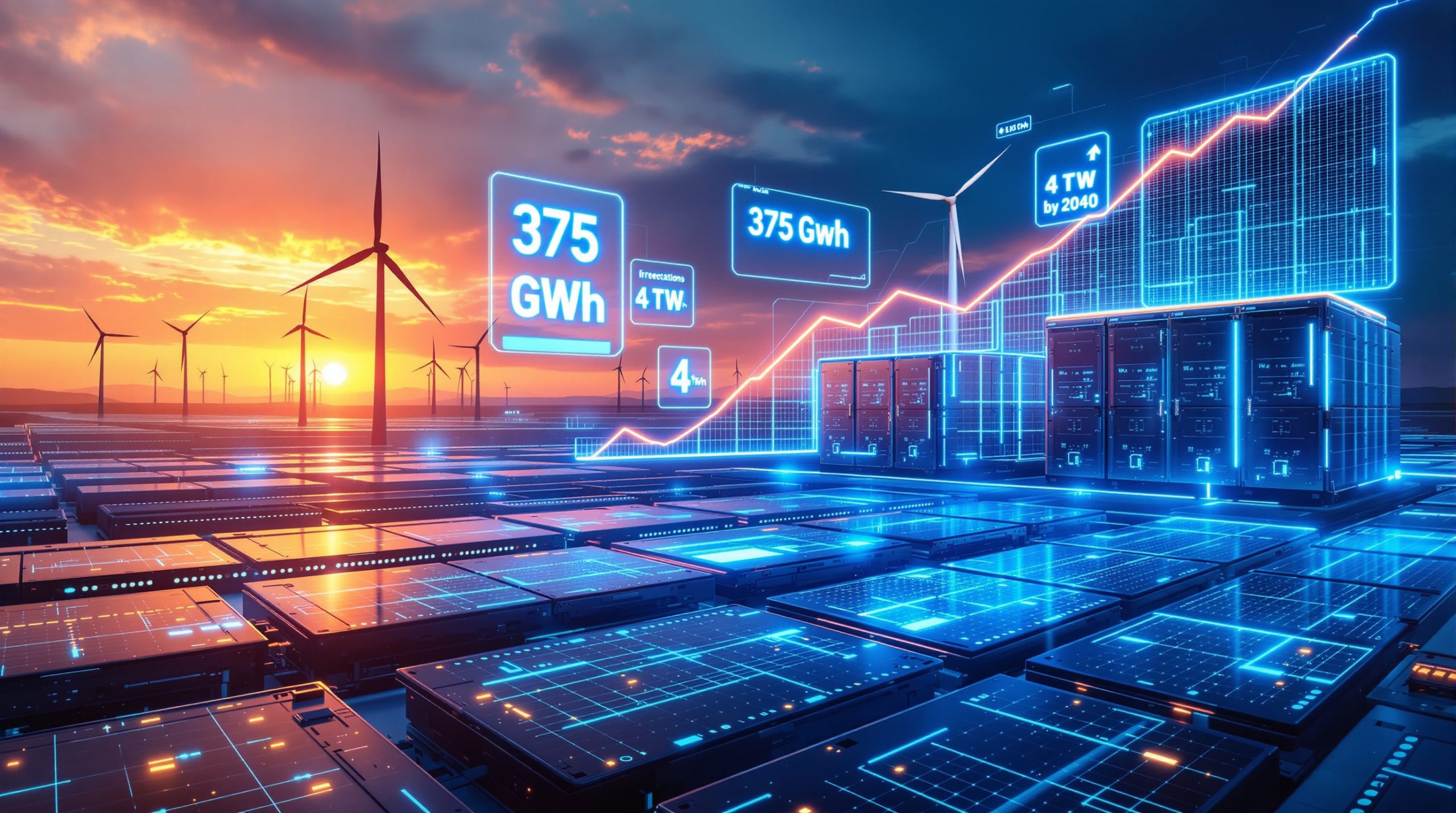China's Blast Furnace Capacity: Halted Replacement and Overcapacity Issues in 2025
In the iron and steel industry, blast furnace capacity trends serve as crucial indicators of market direction and industrial policy implementation. China, the world's largest steel producer, is experiencing significant shifts in its blast furnace landscape throughout 2025, with replacement initiatives halted amid growing overcapacity concerns. Understanding these China iron ore trends is essential for investors and industry stakeholders alike.
Current State of Blast Furnace Commissioning in China
According to the latest Shanghai Metal Market (SMM) survey data, the first half of 2025 witnessed the commissioning of 9 new blast furnaces nationwide, adding approximately 12.5 million metric tons of ironmaking capacity to China's steel industry. A notable characteristic of these newly commissioned furnaces is their size—all feature volumes exceeding 1,200m³, highlighting the industry's shift toward larger, more efficient production units.
"The newly commissioned blast furnaces were relatively scattered across different regions," notes the SMM report, suggesting localized implementation rather than a coordinated national strategy.
While this might appear substantial, industry analysts point out that the number represents a significant decline from historical commissioning rates, reflecting changing market dynamics and policy priorities.
Decommissioning Activities Balance New Capacity
Counterbalancing the commissioning activities, 18 blast furnaces were decommissioned during the same period, removing approximately 12.53 million metric tons of ironmaking capacity from the market. Most of these decommissioned furnaces were smaller units with volumes below 1,080m³, reflecting China's ongoing efforts to phase out outdated production facilities.
This balanced approach resulted in a marginally negative net capacity change of -0.03 million metric tons in H1 2025—effectively neutral from a market perspective. This careful equilibrium demonstrates China's attempt to modernize its steel sector without exacerbating existing overcapacity issues.
Key Insight: The first half of 2025 demonstrated a capacity replacement pattern rather than expansion, with newer, larger furnaces replacing multiple smaller, less efficient units.
How Will Blast Furnace Capacity Change in the Second Half of 2025?
Despite the balanced approach in H1, projections for the remainder of 2025 paint a different picture, potentially disrupting the delicate equilibrium established in the first half of the year.
Projected New Furnace Commissioning for H2 2025
Industry forecasts suggest approximately 11 new blast furnaces will begin operations in the second half of 2025, adding a substantial 17.92 million metric tons of ironmaking capacity. These new installations will predominantly fall within the 1,200-3,000m³ volume range, continuing the trend toward larger production units.
The regional distribution of these new furnaces shows clear patterns:
| Region | New Furnaces | Capacity (million mt) | Percentage of Total |
|---|---|---|---|
| Central China | 4 | 7.2 | 40.2% |
| North China | 3 | 5.8 | 32.4% |
| Southwest China | 2 | 3.1 | 17.3% |
| Other Regions | 2 | 1.82 | 10.1% |
Source: SMM Blast Furnace Tracking Database, July 2025
Notably, 85% of these commissioning activities are scheduled for Q4 2025, creating a potential end-of-year surge in capacity that could impact market dynamics going into 2026.
Planned Decommissioning for H2 2025
To partially offset this growth, 11 blast furnaces are scheduled for decommissioning in the second half of 2025, removing approximately 8.7 million metric tons of ironmaking capacity. Most of these targeted furnaces have volumes below 1,000m³, continuing the industry's shift away from smaller, less efficient units.
"Due to capacity transfer issues at individual steel mills, some decommissioned blast furnaces have relatively large volumes," the SMM survey reveals. This suggests that capacity replacement dynamics are becoming more complex, with some larger legacy furnaces being sacrificed to accommodate strategic objectives or regulatory requirements.
The net result for H2 2025 is projected to be a substantial capacity increase of 9.22 million metric tons—a stark contrast to the balanced approach observed in the first half of the year.
Industry Perspective: "The Q4 commissioning bias aligns with year-end policy compliance deadlines, as steel producers rush to complete previously approved projects before potential regulatory changes in 2026." — SMM Analysis, July 2025
Why Has Blast Furnace Replacement Been Halted?
The apparent contradiction between ongoing commissioning activities and an official "halt" in blast furnace replacement requires deeper examination. Several interconnected factors explain this industry paradox.
Economic Factors Impacting Capacity Replacement
The primary driver behind the halted replacement initiative is the deteriorating economic environment for steel producers. According to the China Iron and Steel Association (CISA), steel mill profitability declined by approximately 34% year-over-year in Q1 2025, creating significant financial pressure on producers.
This profit squeeze stems from multiple factors:
- Raw material costs (particularly coking coal) increased 22% in Q2 2025
- Steel product prices (including rebar) fell 15% amid weakening demand
- Energy costs remain elevated despite efficiency improvements
- Environmental compliance expenses continue to rise
These economic challenges have forced steel producers to reconsider capital-intensive blast furnace replacement projects, with many companies redirecting investment toward cost-reduction initiatives and strategic diversification.
Industry Overcapacity Concerns
Compounding these economic pressures is the persistent issue of industrial overcapacity across China's steel sector. World Steel Association data indicates that crude steel capacity utilization in China hovers around 78% as of June 2025—well below optimal operating levels of 85-90%.
This structural overcapacity creates a challenging environment for new investments:
- Diminishing returns on capital expenditures
- Downward pressure on product pricing
- Increased regulatory scrutiny and intervention
- Resource allocation inefficiencies
"Due to the decline in steel mill profits over the past two years and surplus in industrial capacity, the construction progress slowed at several steel mills," notes the SMM survey. "Therefore, the actual number of commissioned and decommissioned blast furnaces in 2025 may be smaller than projected."
This candid assessment highlights how market realities are tempering even previously approved projects, with some facing delays or potential cancellation.
- Regulatory environment: China's 14th Five-Year Plan emphasizes quality over quantity in industrial development
- Capital allocation: Investors increasingly favor technology upgrades over capacity expansion
- Strategic shifts: Major producers like Baowu are prioritizing high-value specialty steels over commodity products
What Are the Regional Patterns in Blast Furnace Changes?
Regional disparities in blast furnace commissioning and decommissioning activities reflect China's evolving industrial landscape, with clear patterns emerging across different provinces and economic zones.
Geographic Distribution of New Capacity
Analysis of the projected H2 2025 commissioning data reveals Central China's emergence as a significant growth area, accounting for over 40% of new capacity additions. This regional shift represents a notable departure from historical patterns, where coastal provinces dominated new investments.
North China maintains its strategic importance in capacity planning, capturing approximately 32% of new installations. The region's established infrastructure, skilled workforce, and proximity to raw materials continue to provide competitive advantages despite environmental challenges.
Perhaps most surprising is Southwest China's increased activity, securing over 17% of new developments. This emerging trend reflects several regional advantages:
- Lower operating costs compared to coastal areas
- Strategic positioning for Belt and Road Initiative projects
- Provincial government incentives for industrial development
- Relative underinvestment in previous capacity expansion cycles
Meanwhile, coastal regions are demonstrating more selective capacity management, focusing on high-value specialty steel production rather than volume-oriented commodity output.
Volume Trends by Region
The regional distribution of blast furnace volumes follows distinct patterns:
- Central China: Predominantly 1,750-2,500m³ units, optimized for cost-efficient mass production
- North China: Higher proportion of 2,000-3,000m³ furnaces, maximizing economies of scale
- Southwest China: Mix of 1,200-1,800m³ furnaces, balanced for regional market needs
- Coastal Regions: Targeted 1,500-2,000m³ specialized units for higher-value products
This regional specialization reflects differing economic development goals, environmental constraints, and market positioning strategies among China's provinces.
Expert Analysis: "Regional authorities are increasingly influential in capacity decisions, with provincial industrial policies sometimes diverging from national directives to address local economic priorities." — SMM Industry Commentary, July 2025
How Does This Affect China's Overall Ironmaking Capacity?
The net impact of these commissioning and decommissioning activities will reshape China's ironmaking landscape, with significant implications for both domestic and global steel markets.
Annual Capacity Change Analysis
Consolidating the data for the full year 2025:
- Total projected new capacity: 30.42 million metric tons (12.5 + 17.92)
- Total projected decommissioned capacity: 21.23 million metric tons (12.53 + 8.7)
- Net capacity change: +9.19 million metric tons
This net addition represents approximately 0.9% of China's total ironmaking capacity—a modest increase in percentage terms but significant in absolute volume. The concentration of these additions in the second half of the year, particularly Q4, creates potential market disruption as 2026 approaches. This capacity shift directly affects iron ore demand insights and may result in an iron ore price decline according to analysts.
| Period | New Capacity | Decommissioned | Net Change |
|---|---|---|---|
| H1 2025 | 12.50 | 12.53 | -0.03 |
| H2 2025 | 17.92 | 8.70 | +9.22 |
| Full Year | 30.42 | 21.23 | +9.19 |
All figures in million metric tons. Source: SMM Blast Furnace Tracking Database, July 2025
"SMM will update the actual commissioned and decommissioned capacities of China's blast furnaces in 2025 at year-end," the survey notes, acknowledging that final figures may differ from current projections due to construction delays and economic pressures.
Efficiency Transformation in the Industry
Beyond the raw capacity numbers, a profound efficiency transformation is underway across China's steel sector. The shift from smaller to larger, more efficient blast furnaces delivers multiple benefits:
- Improved energy efficiency: Larger furnaces typically reduce energy consumption by 15-20% per ton of iron produced
- Enhanced environmental performance: Modern furnaces incorporate advanced emission control technologies
- Reduced labor requirements: Automation and scale economies lower operational costs
- Improved product consistency: Larger furnaces provide more stable production conditions
This efficiency transformation represents the industry's attempt to balance modernization imperatives with overcapacity concerns—replacing outdated facilities with state-of-the-art equipment while minimizing net capacity growth.
However, the projected net increase of 9.19 million metric tons for 2025 suggests that efficiency gains alone cannot solve the fundamental overcapacity challenge facing China's steel industry. This capacity growth will significantly impact 2025 iron ore forecasts as the market adjusts to changing supply-demand dynamics.
What Are the Market Implications of These Capacity Changes?
The evolving blast furnace landscape has far-reaching implications for steel markets, raw material demand, and industrial policy implementation.
Supply-Demand Balance Considerations
The projected net capacity increase of 9.19 million metric tons in 2025 occurs against a backdrop of already sluggish domestic demand growth. China's steel consumption in construction and infrastructure—historically the largest demand drivers—has plateaued as the economy transitions toward consumption-led growth.
This supply-demand imbalance creates several market pressures:
- Potential oversupply conditions: Capacity utilization rates likely to decrease further from current 78%
- Downward price pressure: Additional supply in a saturated market typically suppresses pricing
- Export incentives: Domestic oversupply encourages producers to seek international markets
- Raw material demand implications: Increased demand for iron ore and coking coal despite efficiency gains
The timing of capacity additions, heavily weighted toward Q4 2025, may create particular market volatility at year-end and into early 2026 as new production ramps up.
Investment and Financial Outlook
From an investment perspective, the blast furnace landscape presents a complex picture:
- Capital expenditure discipline: Major producers increasingly cautious about new projects
- Operational efficiency focus: Investment shifting toward process optimization rather than expansion
- Environmental compliance spending: Significant capital allocated to emissions reduction technologies
- Strategic diversification: Investment in alternative production methods (EAF, hydrogen) gaining momentum
Financial performance expectations for the steel sector remain subdued, with analysts projecting continued margin pressure through 2026 as new capacity comes online amid challenging demand conditions. These industry shifts could create significant tariff market impacts as governments respond to changing trade patterns.
Market Insight: "The capacity additions projected for late 2025 risk exacerbating existing oversupply conditions, potentially triggering another round of price volatility in Q1 2026 unless offset by unexpected demand growth or accelerated capacity rationalization." — SMM Analysis, July 2025
FAQ: China's Blast Furnace Capacity Changes
What is driving the halt in blast furnace replacement?
The halt in blast furnace replacement is primarily driven by declining steel mill profitability (down 34% year-over-year in Q1 2025) combined with persistent industrial overcapacity (utilization rates around 78%). Economic pressures have made new investments less attractive, with only previously approved projects currently proceeding to completion. Additionally, regulatory emphasis has shifted toward quality over quantity in steel production, discouraging capacity expansion.
How are blast furnace sizes changing in China?
There's a clear trend toward larger blast furnaces, with all newly commissioned units exceeding 1,200m³ in volume, while decommissioned furnaces are predominantly smaller units below 1,080m³. This shift reflects the industry's focus on efficiency, economies of scale, and environmental performance. Larger furnaces typically reduce energy consumption by 15-20% per ton of iron produced and incorporate more advanced emission control technologies.
Will actual commissioning match current projections?
According to SMM analysis, the actual number of commissioned and decommissioned blast furnaces is likely to be smaller than current projections due to slowing construction progress and economic pressures facing steel producers. The concentration of projected commissioning in Q4 2025 creates particular uncertainty, as year-end deadlines sometimes result in delays extending into the following year.
What regions are seeing the most blast furnace activity?
Central China, North China, and Southwest China are the regions with the most significant blast furnace commissioning activity projected for the second half of 2025, collectively accounting for nearly 90% of new capacity. This regional pattern represents a shift from historical trends, with inland provinces gaining prominence relative to coastal areas. Central China alone is projected to add 7.2 million metric tons of new ironmaking capacity in H2 2025.
Disclaimer: Projections regarding blast furnace commissioning and decommissioning are based on currently available data and subject to change due to market conditions, policy adjustments, and individual company decisions. Investors and industry participants should conduct their own due diligence before making decisions based on these forecasts.
Further Exploration
Readers interested in deeper analysis of China's steel industry capacity trends can explore additional resources from Shanghai Metal Market (SMM), which maintains comprehensive tracking databases on ironmaking capacity developments across China. SMM regularly publishes industry surveys and market analyses that provide valuable insights into this critical sector of the global economy.
The blast furnace capacity landscape represents just one dimension of China's evolving steel industry, with parallel developments in electric arc furnace (EAF) capacity, scrap utilization, and environmental compliance technologies all contributing to the sector's transformation.
Looking to Capitalize on the Next Major Mineral Discovery?
Stay ahead of the market with Discovery Alert's proprietary Discovery IQ model, which instantly identifies significant ASX mineral discoveries and turns complex data into actionable investment insights. Explore historic returns from major discoveries and understand how to position yourself for similar opportunities by visiting the dedicated discoveries page.




